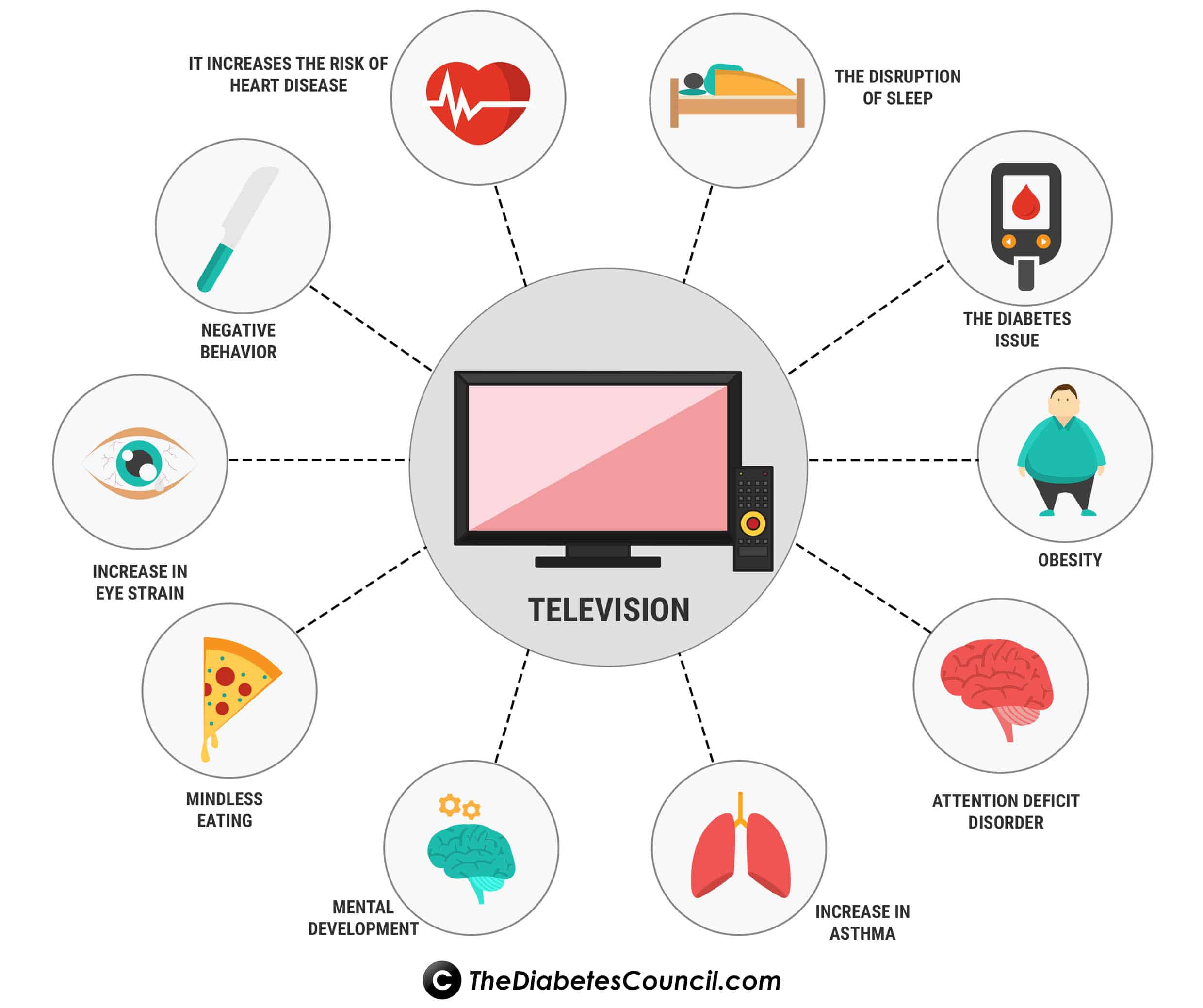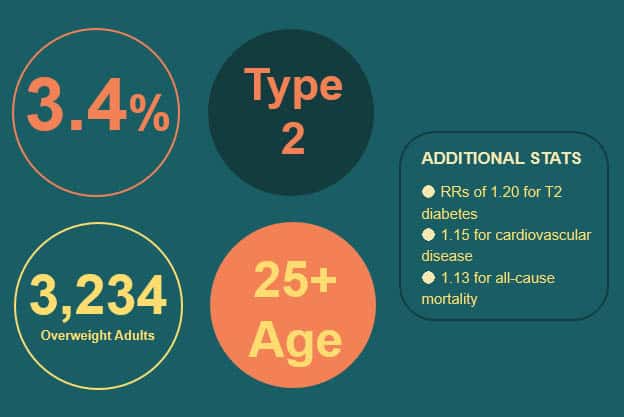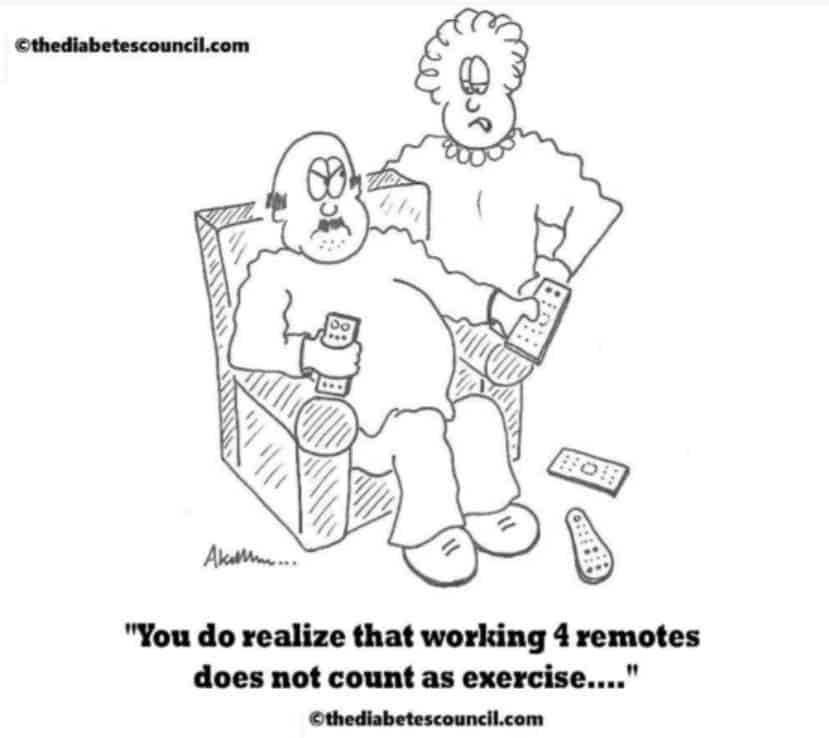
Watching too much television has been linked to a number of health problems. Conditions like Attention Deficit Hyperactivity Disorder (ADHD), obesity, diabetes and cardiovascular disease are just some of the ones that tend to show up when we are constant couch potatoes.1
We received the following query from Ellen, who has Type 2 diabetes: “Should I watch TV with diabetes? If it is ok, how much per day is an acceptable amount of TV or screen viewing time?”
In this article, we will explore why it is not healthy to watch too much television, and we will look at activities other than watching television that are healthier for people with diabetes.
Further, we will look at how screen time of any kind, whether it is on a cell phone, a computer screen, or another device, can be harmful to people with diabetes and explore why that is the case. Let us look at some of the research related to TV watching.
Contents
The American Academy of Pediatrics advises that children only watch two hours or less of TV per day. This includes screen time from all electronic devices, not just the television screen.
In 2007, a Norwegian study looked at Type 1 diabetes children and found that those that watched TV the most had less control over their diabetes. They concluded that allowing less TV time for these children improved their blood sugars and their long-term health. In fact, with every hour of TV these children with diabetes watched, they had decreased control over their diabetes.
I recommend these articles for more information on diabetes:
In the study, for children who watched more than four hours of television, their average A1C was 9.5 percent. Conversely, children who watched less than one hour of TV per day had an average A1C of 8.2 percent.2
Some experts think this is because a child with Type 1 diabetes and running high blood sugars may feel unwell, and therefore end up watching more TV. The fatigue from high blood sugars can be severe and energy consuming. This is how one gets stuck in an unhealthy cycle. More fatigue breeds more inactivity. More inactivity breeds more TV watching, snacking, and subsequently, uncontrolled diabetes.
The study evaluated the TV time and A1C of 538 children with Type 1 diabetes. Participants were of an average age of 13. Blood sugars in participants were increased for every hour of television watched. Those who watched four hours of TV per day had the highest A1C. The study shows that turning off the TV increases control of diabetes.3
Snacking and TV go hand in hand
You have got one hand on the TV remote, and one hand on the chip bag. You are doing 12-ounce curls with a Mountain Dew. You are binge watching “Orange is the New Black” on Netflix, and have not moved an inch all weekend except to make your way to the refrigerator or to the bathroom. Sounds familiar? This is what comes to mind when we think of a “couch potato”.
Now let us imagine a person with diabetes doing this. What are their blood sugars going to look like? With the high consumption of snacking and lack of any activity, they will likely be very high. If they are a regular couch potato, they are likely to have a high A1C as well, with a poor control over their diabetes. And herein begins the vicious cycle.
Is smoking encouraged by watching TV?
We learned that watching television encourages you to be inactive, and to snack more than you normally would. Studies have also found that if a person smokes tobacco, watching television increases smoking as well.5 Have we convinced you by now? Or do you still think you need to catch the next episode of “The Walking Dead?”
Pre-diabetes and TV
If you have pre-diabetes, the risk of developing Type 2 diabetes increases proportional to the amount of TV that you watch. For every hour watched your chance of tipping over into Type 2 increases by 3.4 percent, according to a recent study published in Diabetologia. 3,234 overweight adults of the age of 25 and above were studied for this research.
According to this study, other factors did not seem to matter. Even if you followed a healthy diet and exercised moderately, watching TV still increased your chances of developing Type 2 diabetes. That is reason enough to turn off the tube and retire your remote.
The study further showed that sitting for long periods of time without moving causes a marked decrease in metabolism. This, in turn, promotes over-eating and poor nutritional habits. It also reaffirmed the link between sedentary behavior and obesity, high levels of blood fats and other heart diseases.4
The researcher observed “RRs of 1.20 for type 2 diabetes, 1.15 for cardiovascular disease, and 1.13 for all-cause mortality per every 2-hour increase in TV viewing per day. Based on incidence rates in the United States, we estimated that the absolute risk difference (cases per 100 000 individuals per year) per 2 hours of TV viewing per day was 176 for type 2 diabetes, 38 for fatal cardiovascular disease, and 104 for all-cause mortality”.
Give up my TV?
You may be thinking, “Give up my TV? What is this you say?” Do not fear as there are ways of being active while getting the appropriate screen time. You can find some good exercise TV shows to work out to. For those who can afford it, you can invest in a treadmill or an elliptical, so you can catch your favorite shows while jogging or doing elliptical. You will get active while you watch TV. As you watch and work out, you serve to increase your metabolism, burn more calories, increase your energy, and decrease your level of insulin resistance.
To increase active screen time, why not try the newest craze, Pokémon Go? You will be interacting with a mobile screen, but you will also be running around looking for Pokémon characters. This can increase your activity up to 5k of additional walking a day! Just be careful to observe some simple safety rules, so you don’t blindly follow Pokémon off a cliff. Read our article on Pokémon Go here.
An older option, the Wii Fit, may also help to get you up and move while enjoying that America’s favorite pastime – watching the television. We should also teach our children to spend less time in front of the television and more time doing activities that require movement. Small lifestyle changes and awareness of how much time one spends sitting can lead to a healthier future.
Further reading:
Over to you
If you have any ideas related to how a person with diabetes could avoid watching too much TV, please share them with us and other readers in the comment section below.
If you are a non-TV watcher, please share with the rest of us how you manage to cut television out of your life. Additionally, please share tips you have to manage your diabetes while staying active without getting sucked into the couch potato routine.
TheDiabetesCouncil Article | Reviewed by Dr. Sergii Vasyliuk MD on June 02, 2020
References
- Grontved A, Hu, FB: Television viewing and risk of type 2 diabetes, cardiovascular disease, and all-cause mortality. JAMA 305:2448–2455, 2011
- http://www.nbcnews.com/id/18859565/ns/health-diabetes/t/tv-can-be-bad-diabetic-children/
- http://www.webmd.com/diabetes/news/20070525/tv-worsens-childrens-diabetes
- http://www.newsmax.com/Health/Health-News/diabetes-risk-TV-health/2015/04/02/id/636058/
- http://www.endocrineweb.com/news/obesity/6109-excessive-tv-viewing-may-be-linked-increased-type-2-diabetes-risk
- https://www.ncbi.nlm.nih.gov/pmc/articles/PMC4291304/








